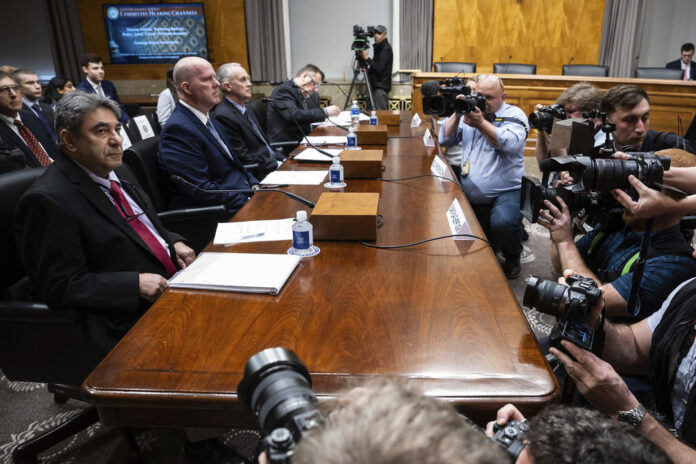On Wednesday, a former Boeing engineer who went public with his concerns about the company’s airplane safety told senators that he had been “told, frankly, to shut up” and that the corporation had routinely ignored and intimidated him whenever he spoke up.
Even after voicing concerns, Sam Salehpour—who is still employed by the company—said he experienced physical threats.
“My boss said, ‘I would have killed someone who said what you said in a meeting,’” he told the Senate Homeland Security Permanent Subcommittee on Investigations. Following his claims that the firm ignored his warnings for over three years, Salehpour, who initially shared his account with the New York Times, testified as a whistleblower.
“I was ignored, I was told not to create delays, and I was told, frankly, to shut up,” Salehpour said, drawing a comparison between the company’s safety culture and NASA’s pre-Challenger catastrophe safety culture.
“The mindset at the top is to simply release a final component, no matter what it is,” he stated.
Boeing chose not to address Salehpour’s comments, although the company has always stated that “retaliation is strictly prohibited at Boeing” and that its regulatory standards urge all employees to speak out when problems emerge.
Since January, when a door panel came loose on a Boeing 737 MAX airliner over Oregon, the company’s production methods have been under the microscope. Senators convened the hearing to examine the company’s safety culture, but Salehpour was involved with two separate aircraft types (the Boeing 787 and the 777).
Additionally, Ed Pierson, who is now the executive director of the Foundation for Aviation Safety and a former engineer at Boeing, stated that the information regarding the door plug’s installer does exist, despite federal safety investigators’ inability to obtain it from Boeing. Pierson accused Boeing of participating in a “criminal cover-up.”
Last month, Jennifer Homendy, who is leading the independent National Transportation Safety Board’s investigation into the door plug incident involving Alaska Airlines, stated that Boeing had refused to provide records identifying the individual responsible for installing the door panel. Last week, Homendy emphasized that she was still awaiting such records. Boeing CEO David Calhoun allegedly told Homendy last month that the firm “has no records of the work being performed,” as she testified before senators.
Pierson, however, claimed that he had received the papers from an internal whistleblower and had subsequently turned them over to the FBI.
Pierson informed the court that the recordings are real. “I was the one who handed them over to the FBI, so I am well aware of this.”
A request for comment was not responded to by the FBI. Regarding Pierson’s testimony, Boeing chose not to comment.
Some of Salehpour’s claims include subpar sealing on the 787 Dreamliner, which he brought up on multiple occasions with upper management. He was subsequently moved to the 777, a different model of plane, where he discovered even more issues.
In his research, Salehpour discovered that, 98.7 percent of the time, Boeing did not correctly shimming, or filled holes in the 787’s body. In addition, he mentioned that the openings were filled with debris 80% of the time.
According to Salehpour, he saw what he dubbed the “Tarzan effect” on the Boeing 777: employees hopping on parts of the plane to fit them together. He said that these problems could cause the planes’ bodies to deteriorate with time.
I do not want to see another 787 or 777 disaster, therefore I felt compelled to come out, and that is why I am here today,” Salehpour added.
